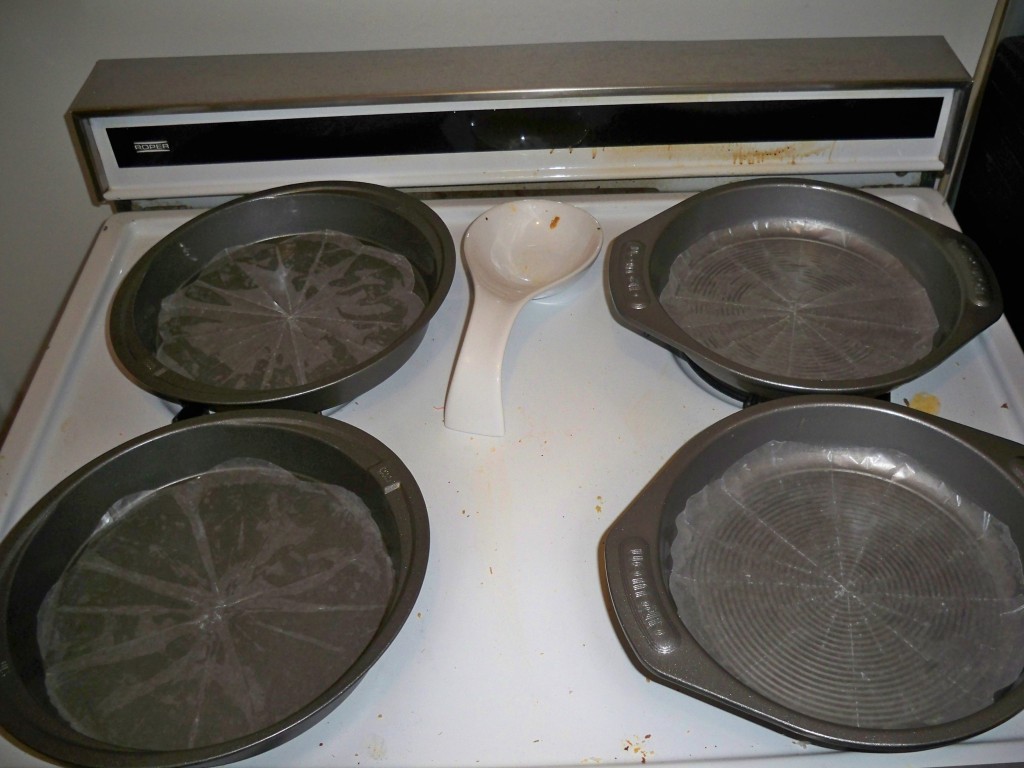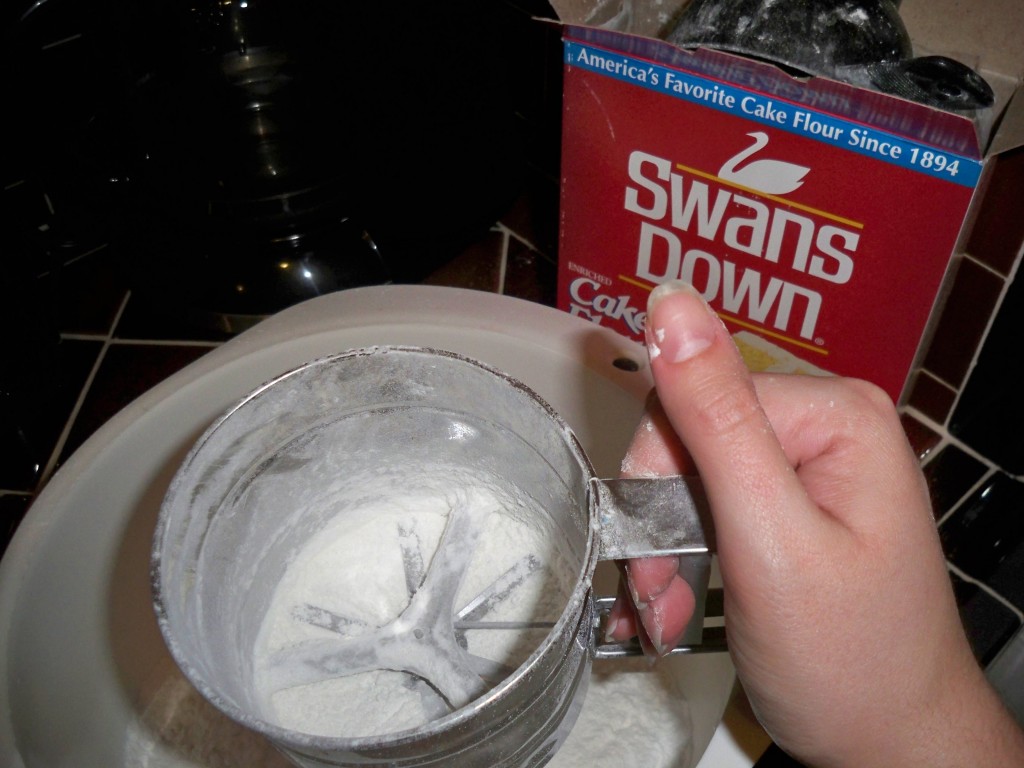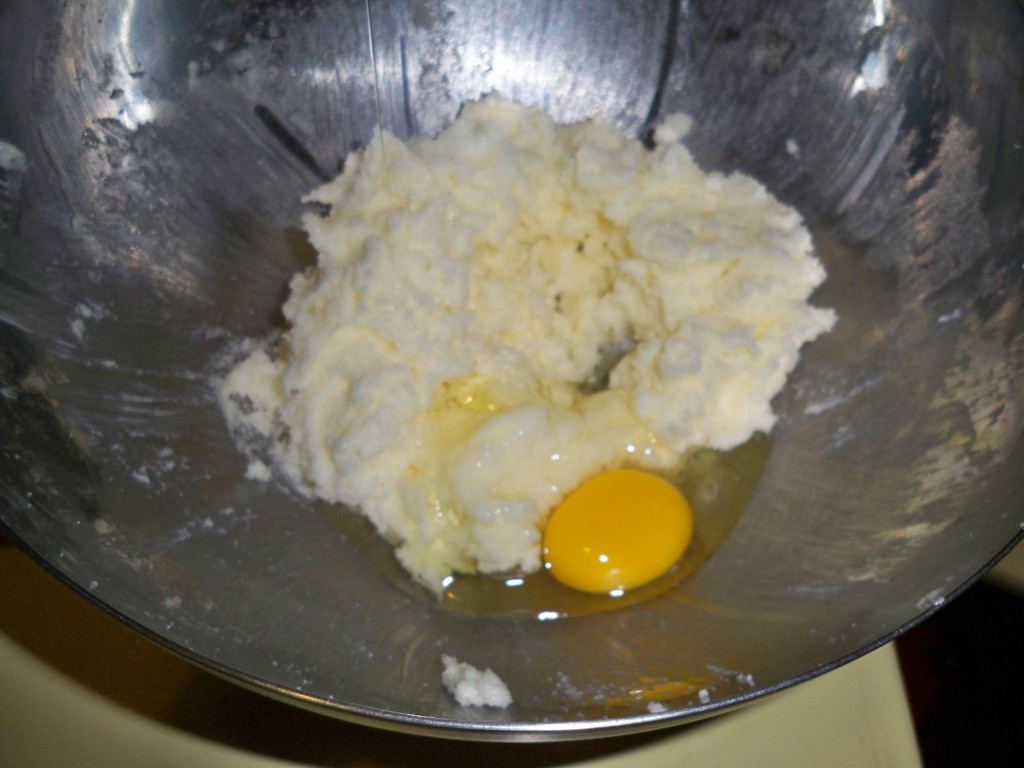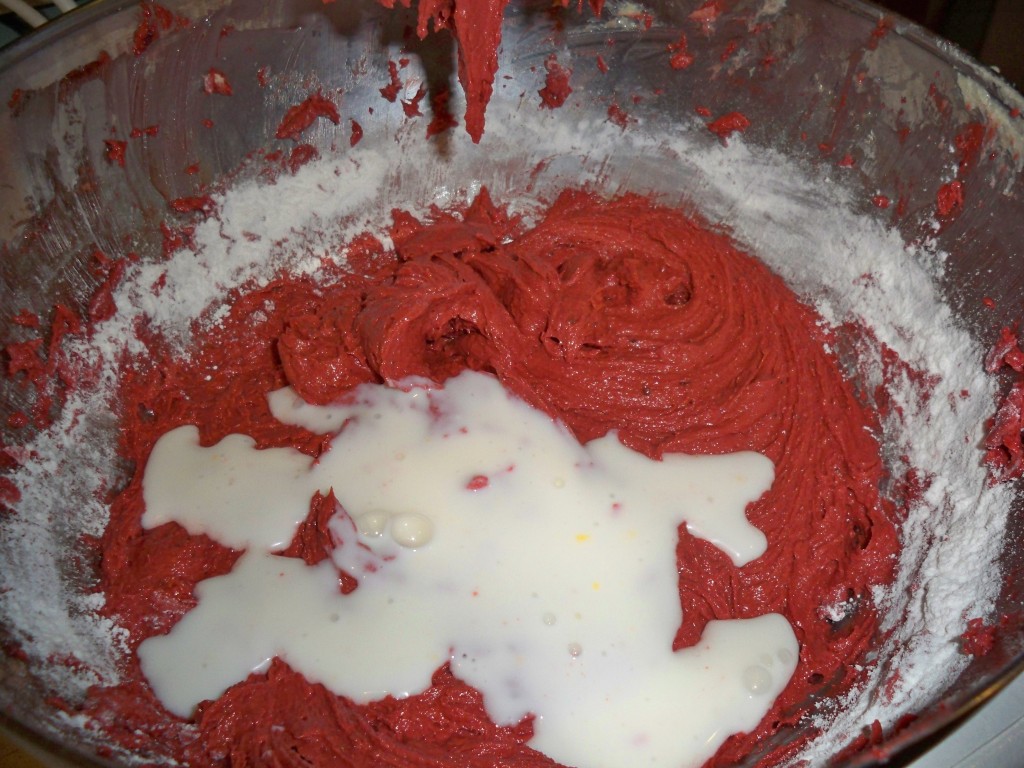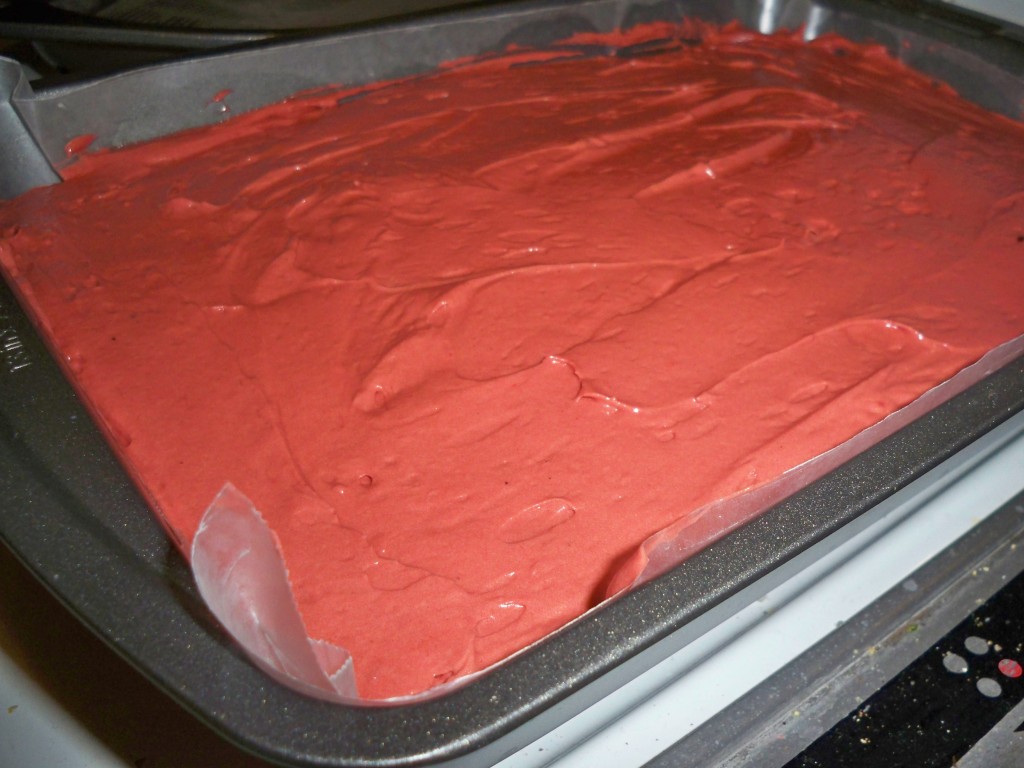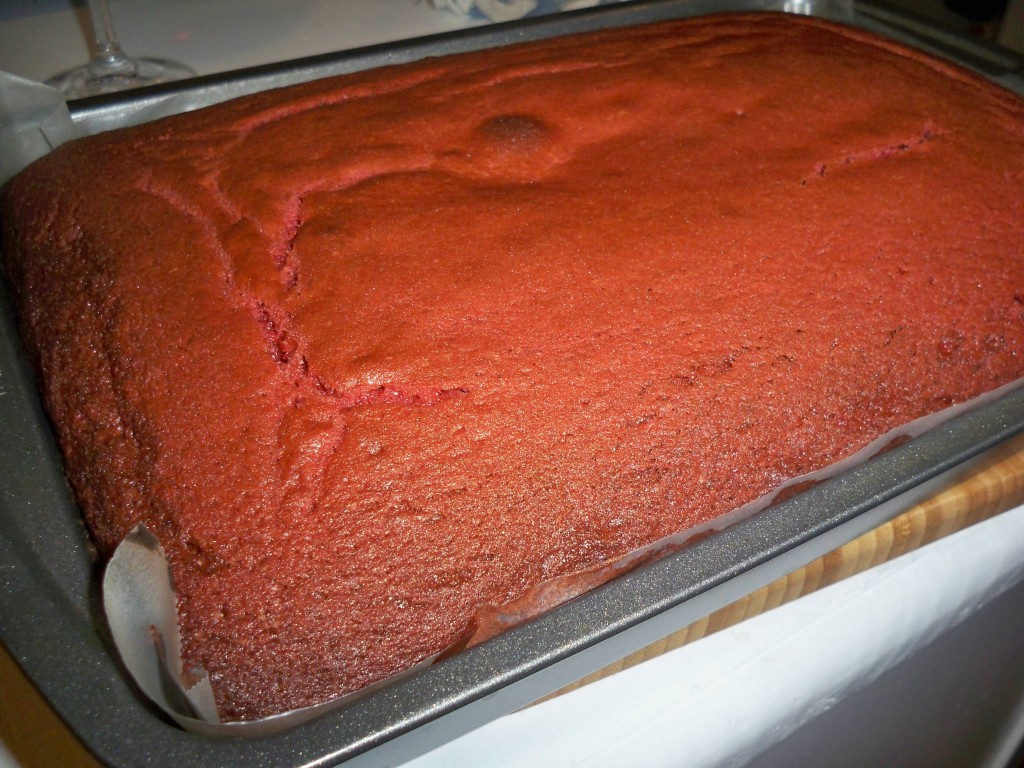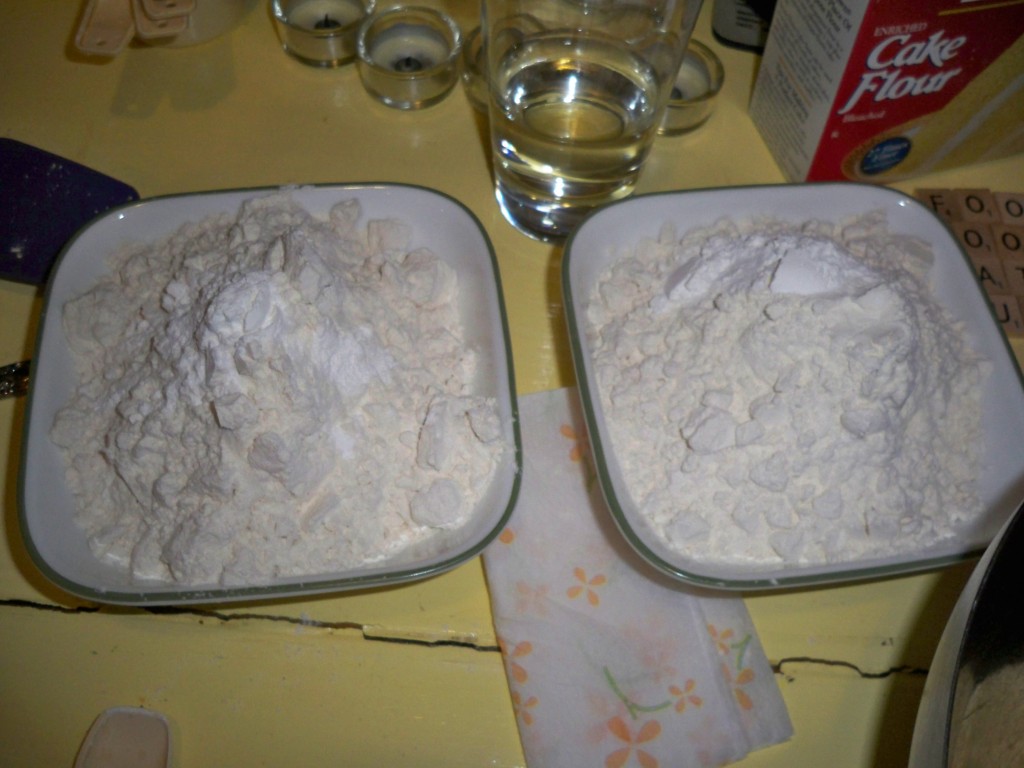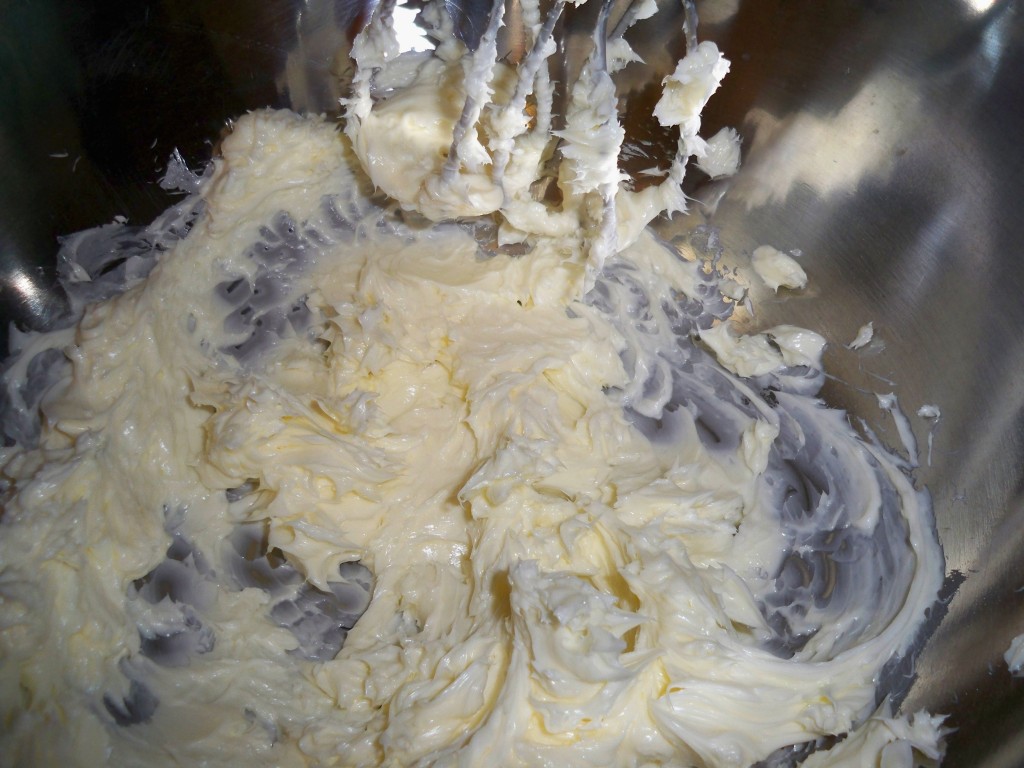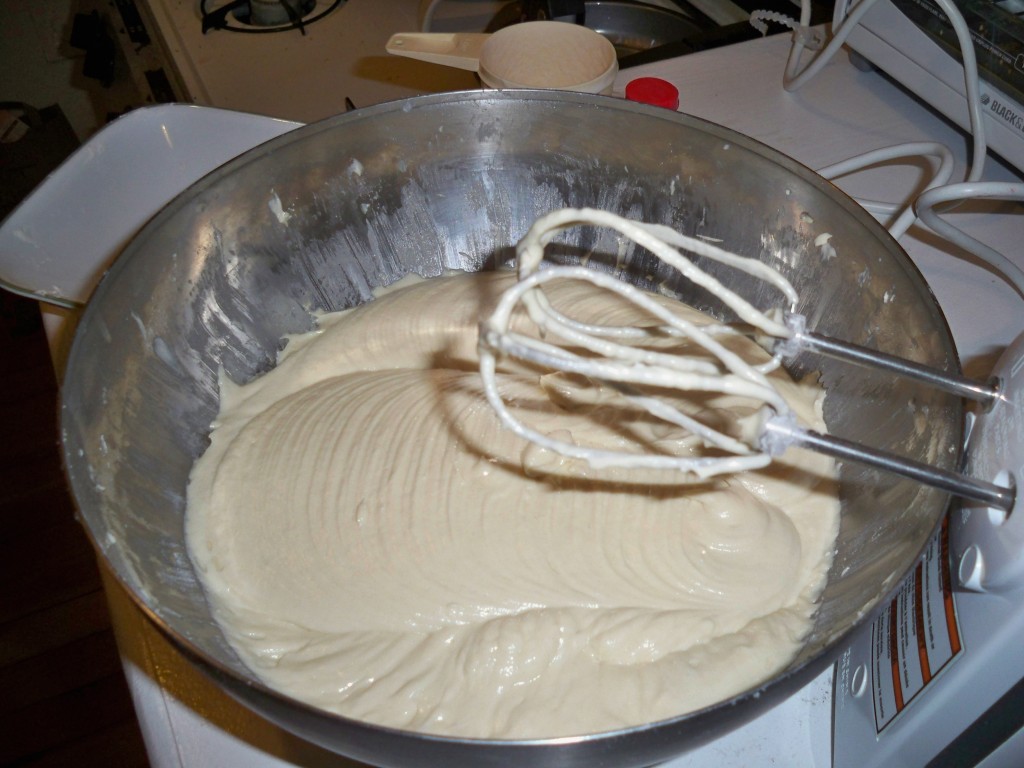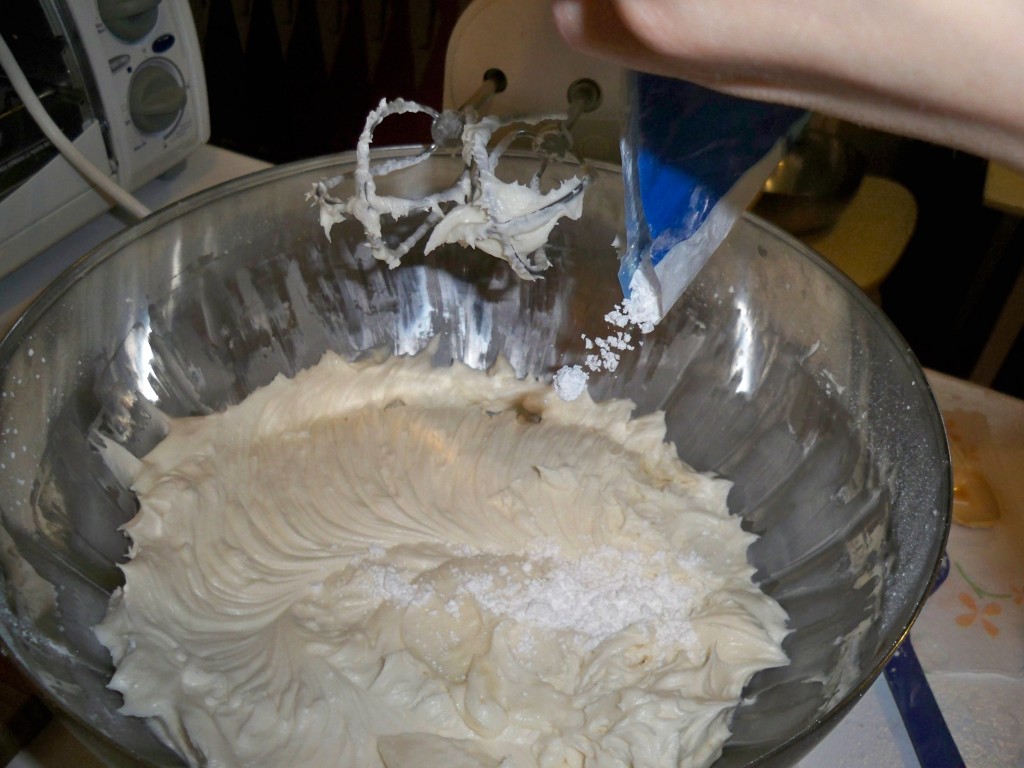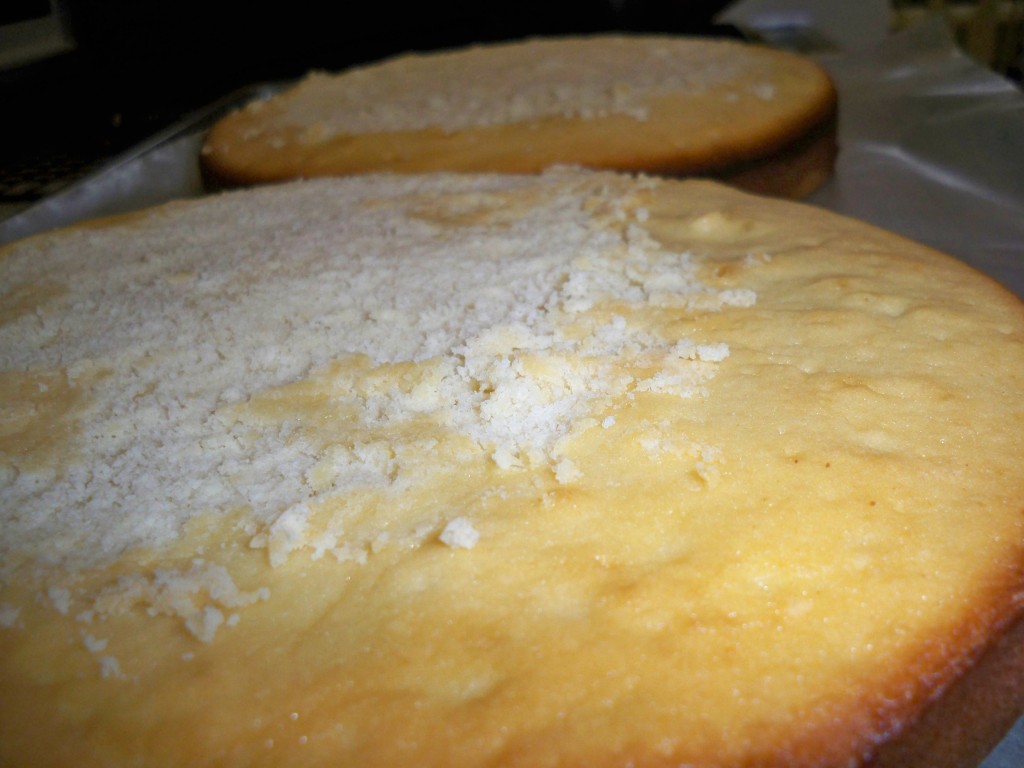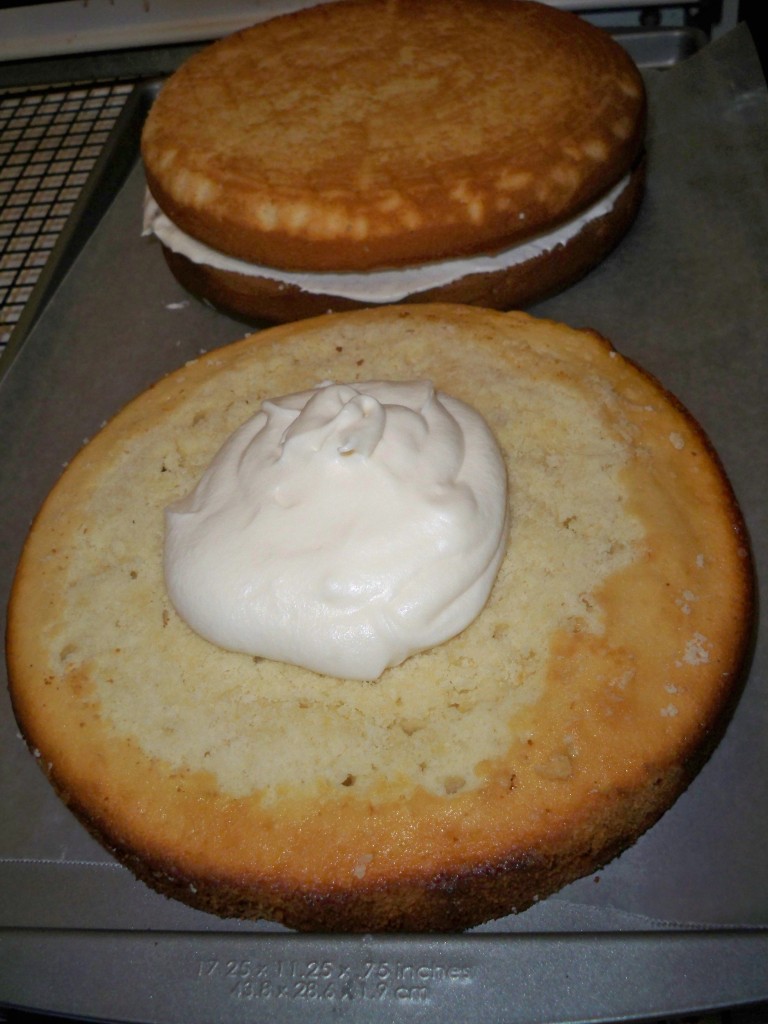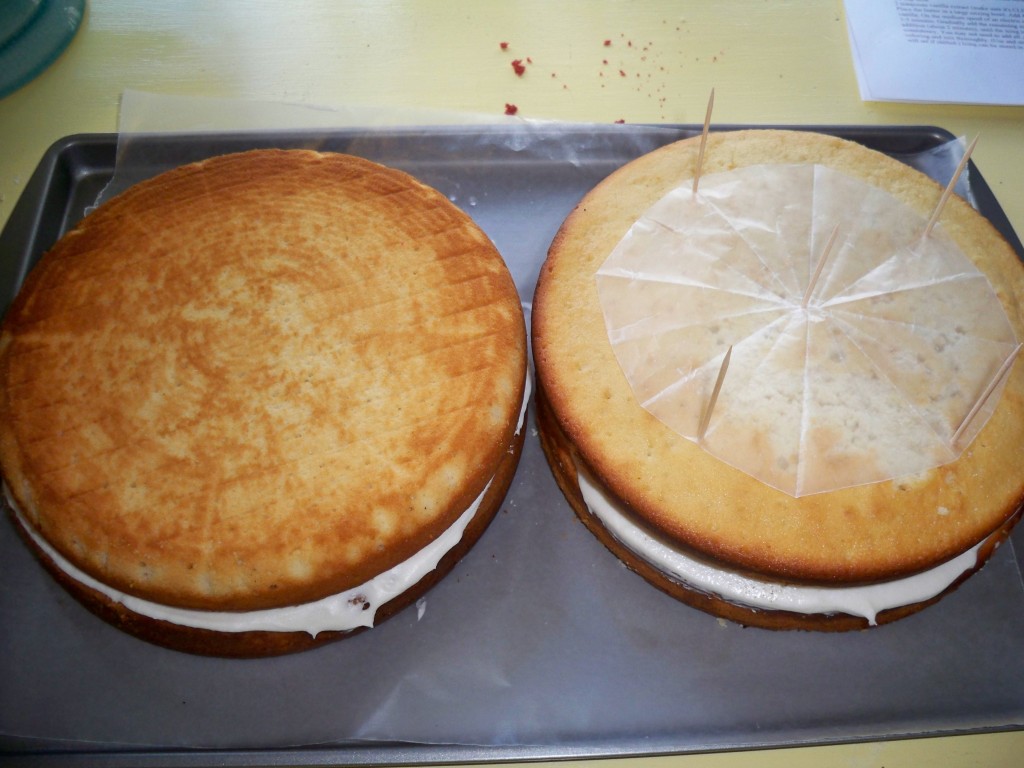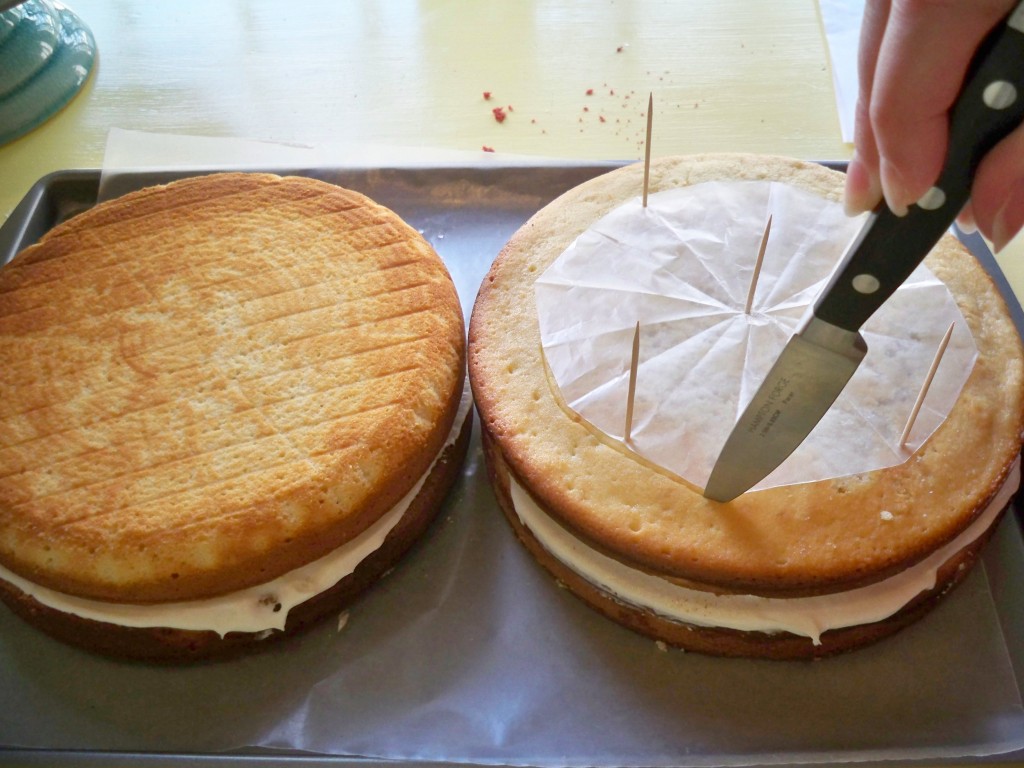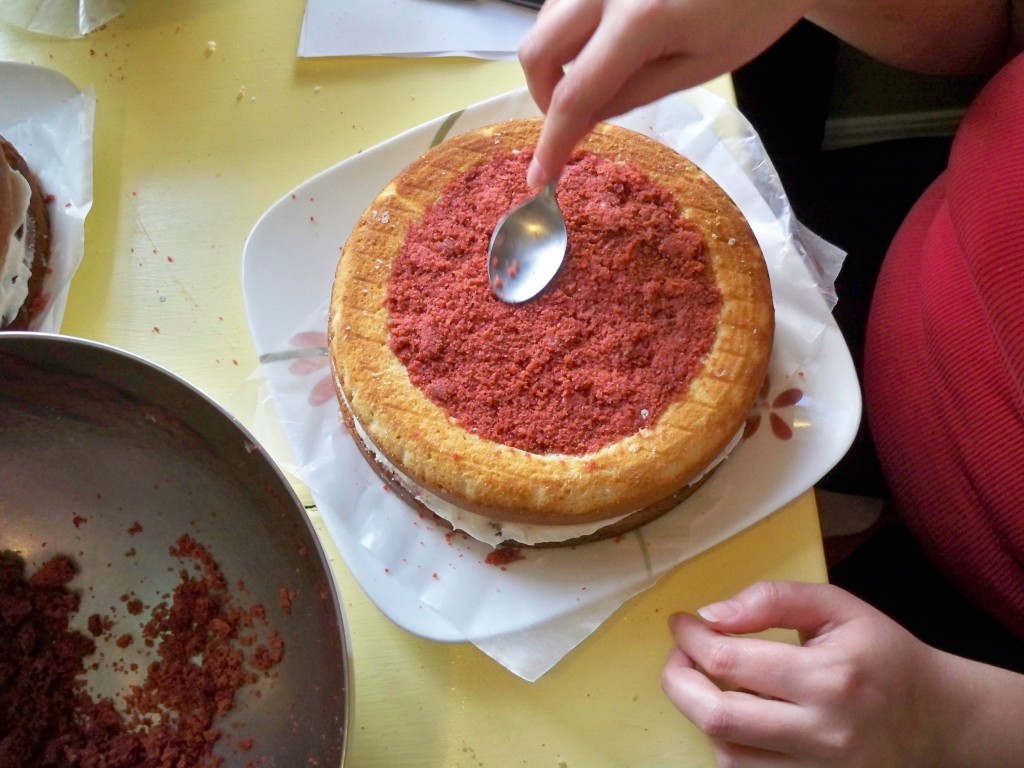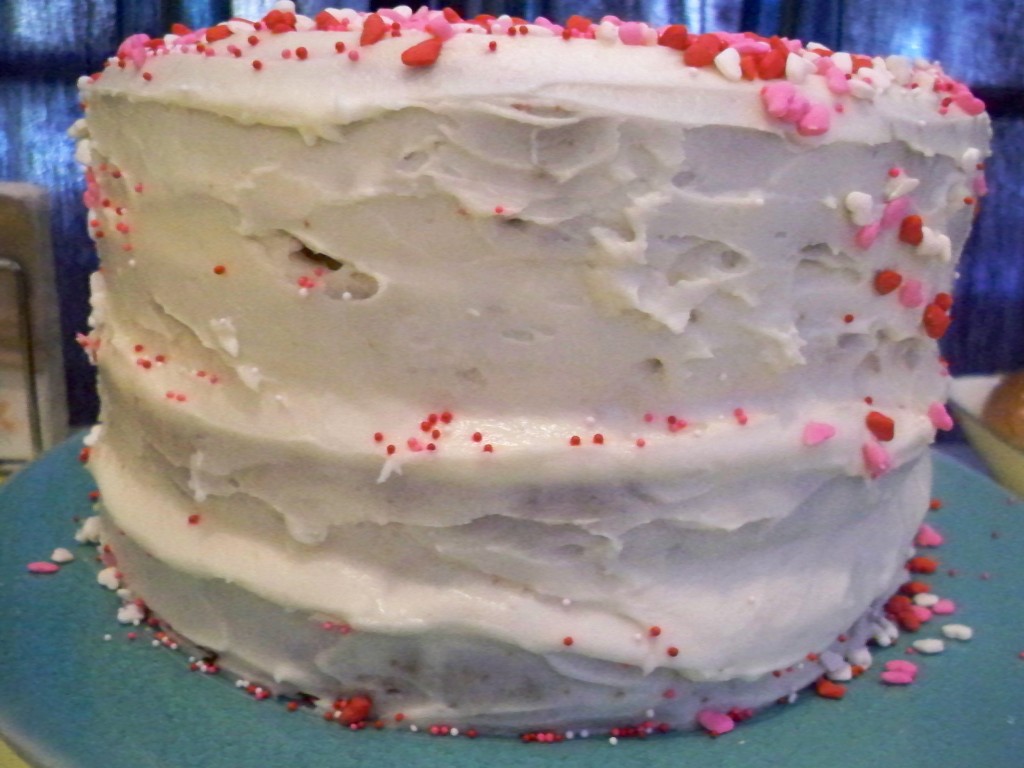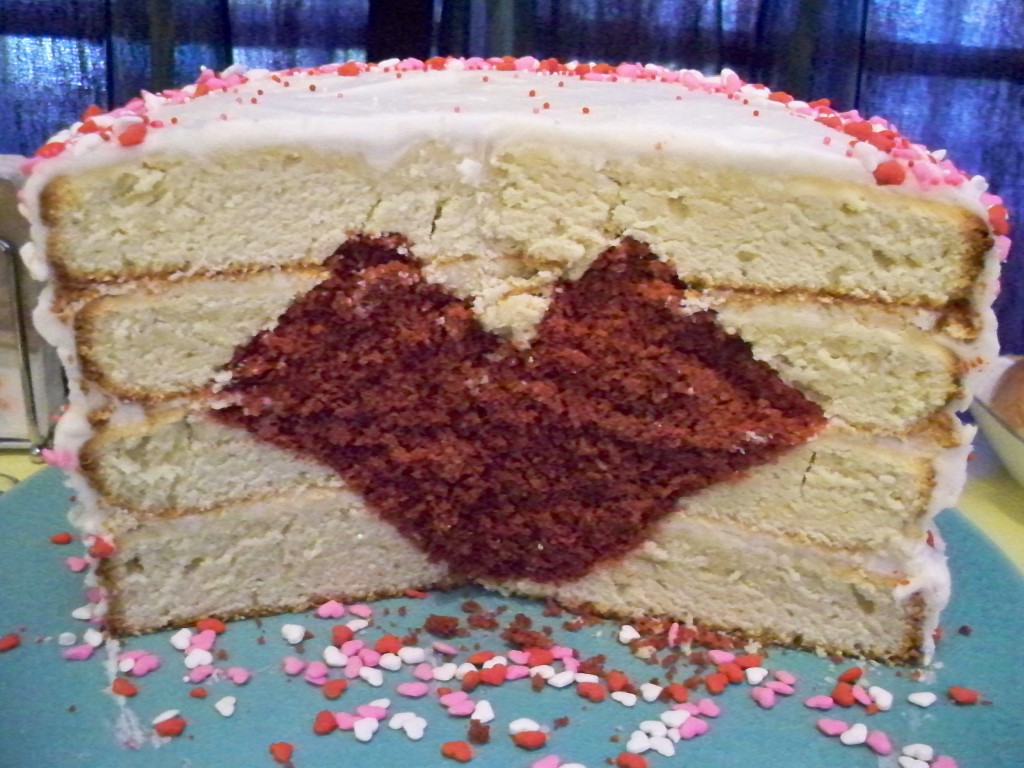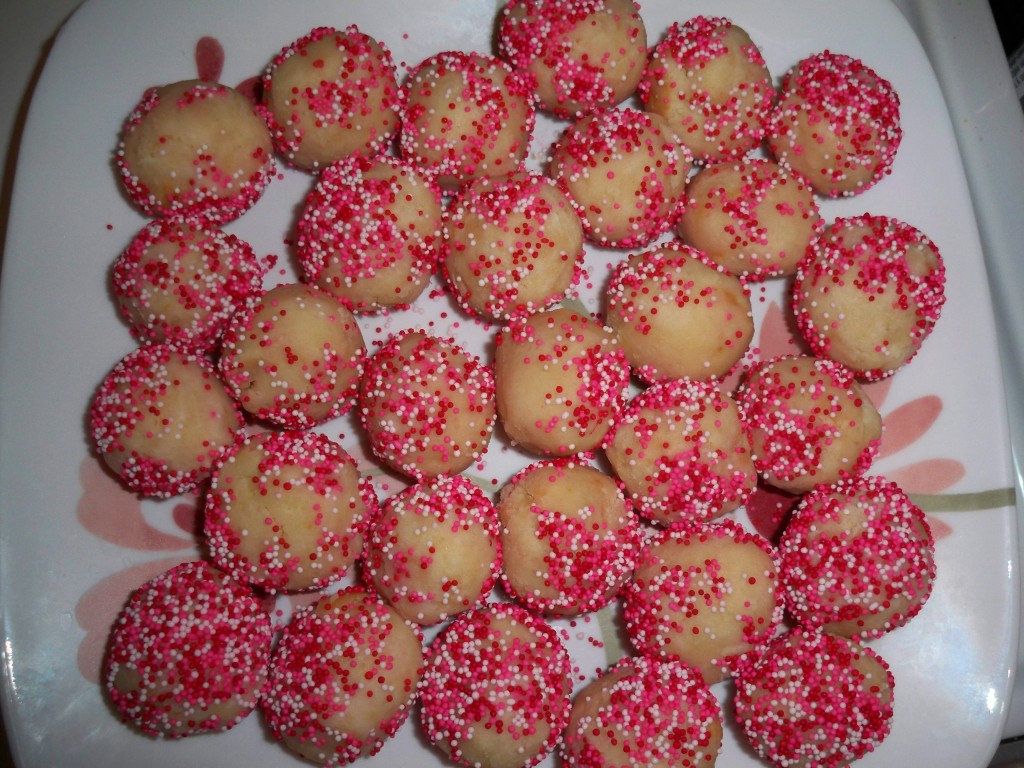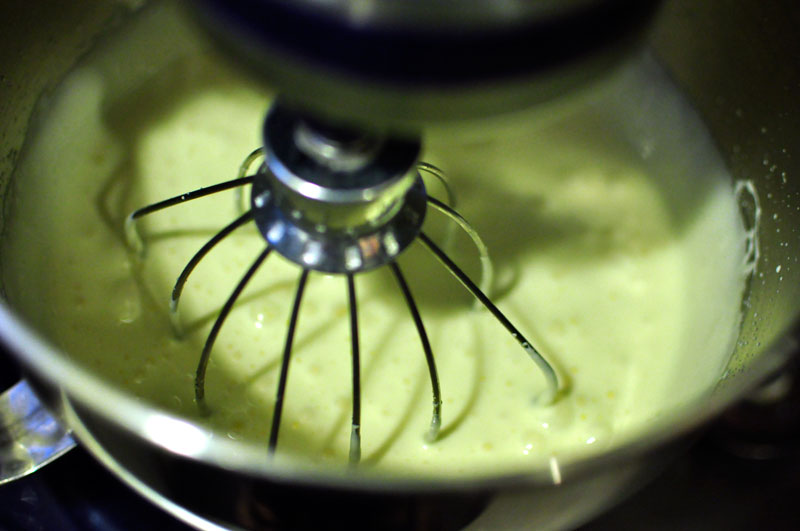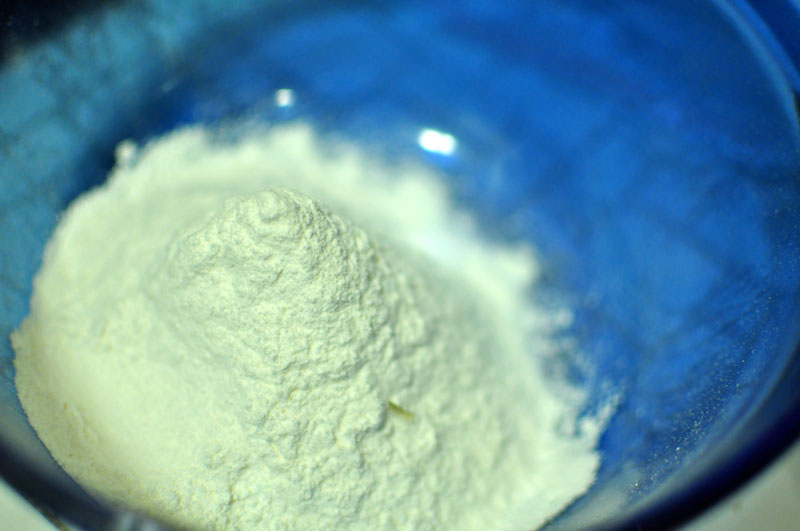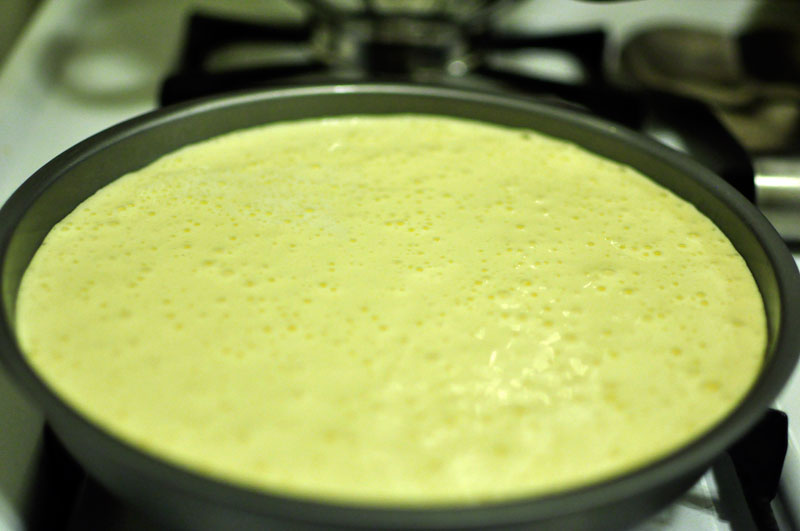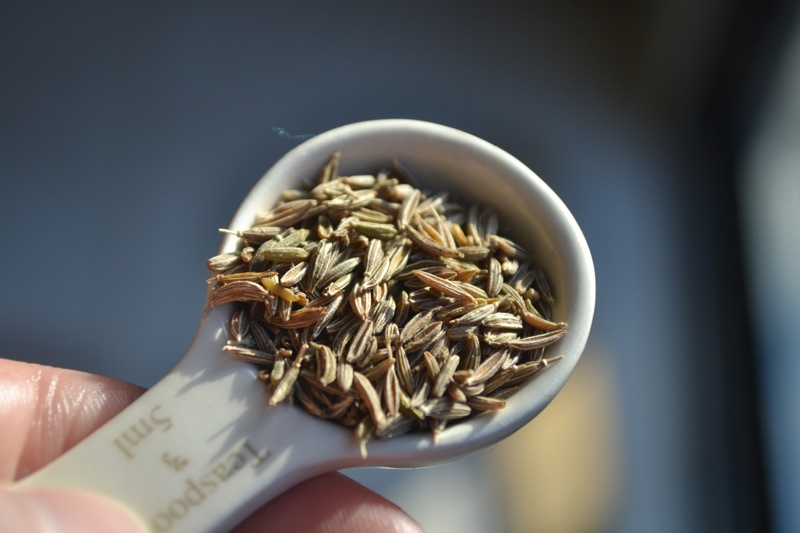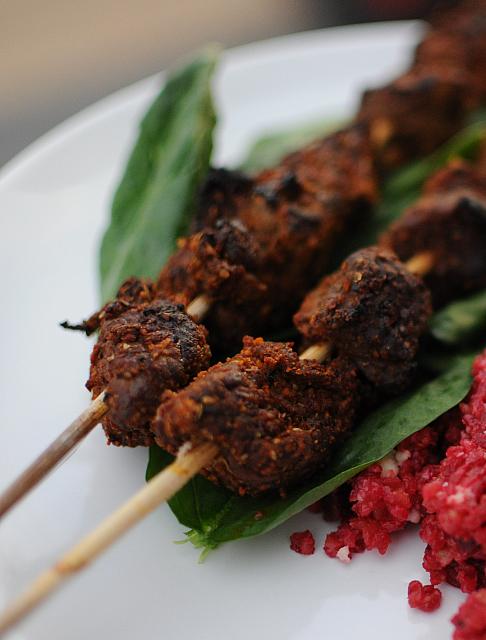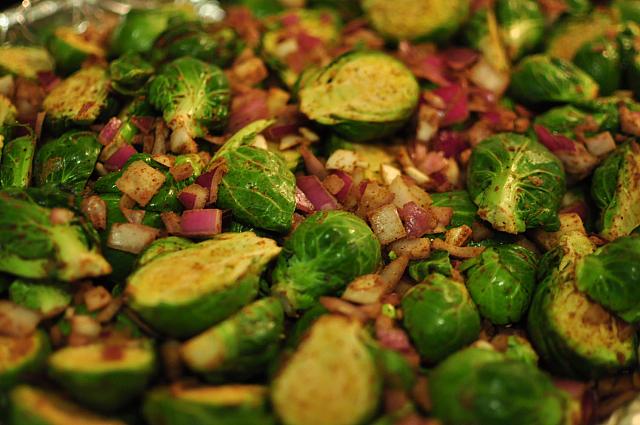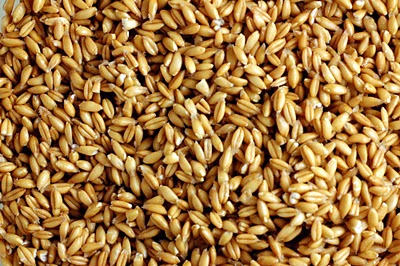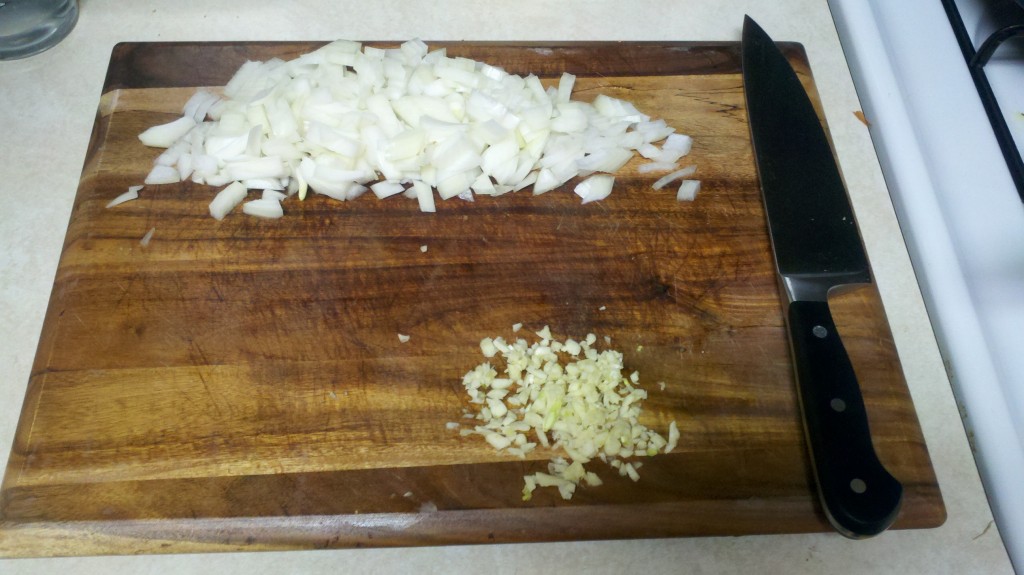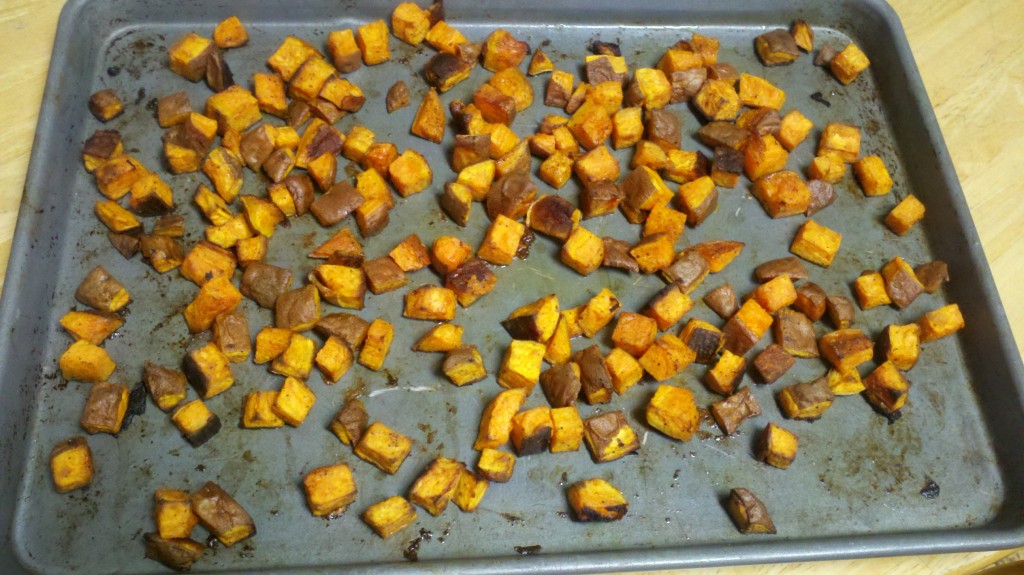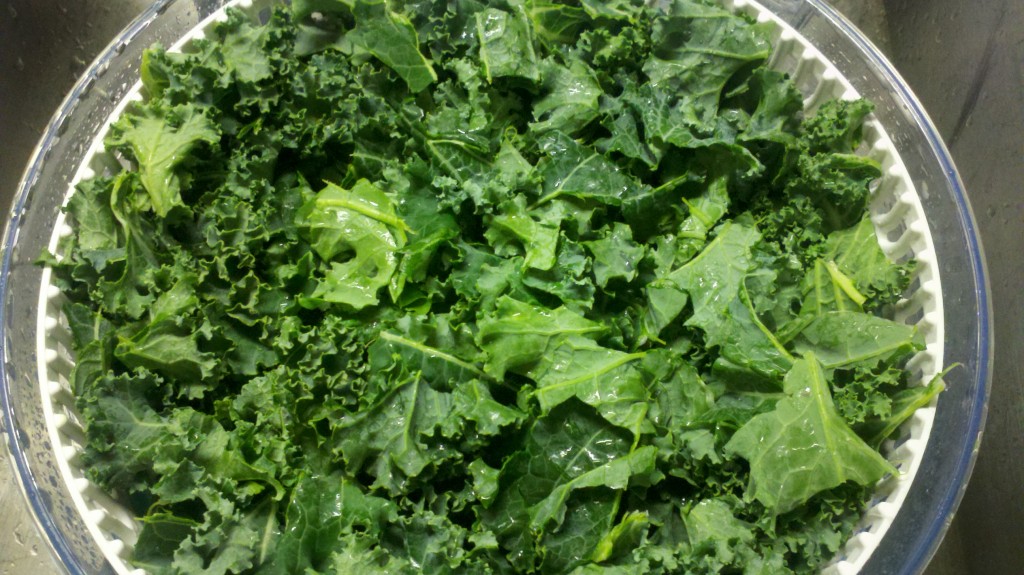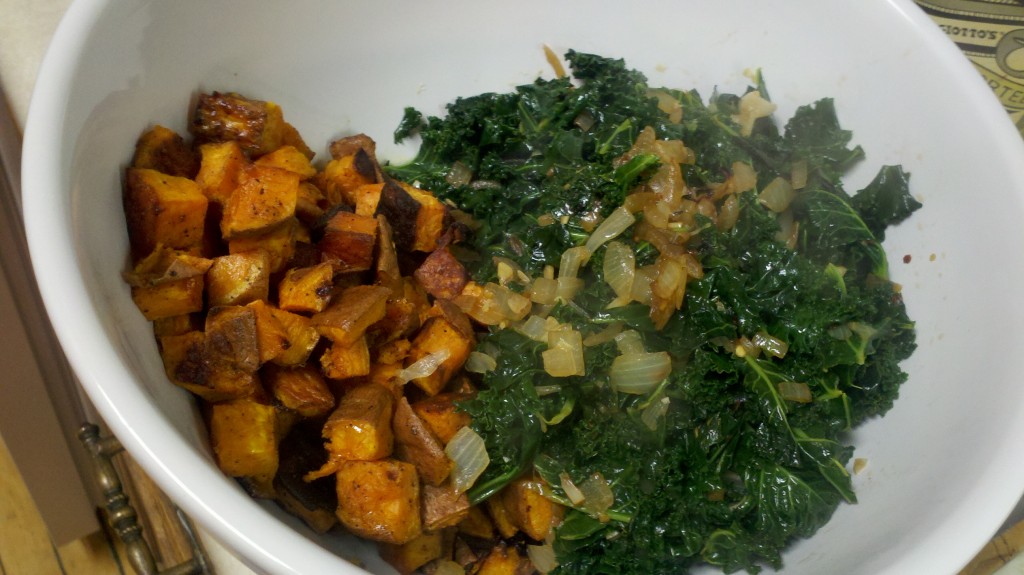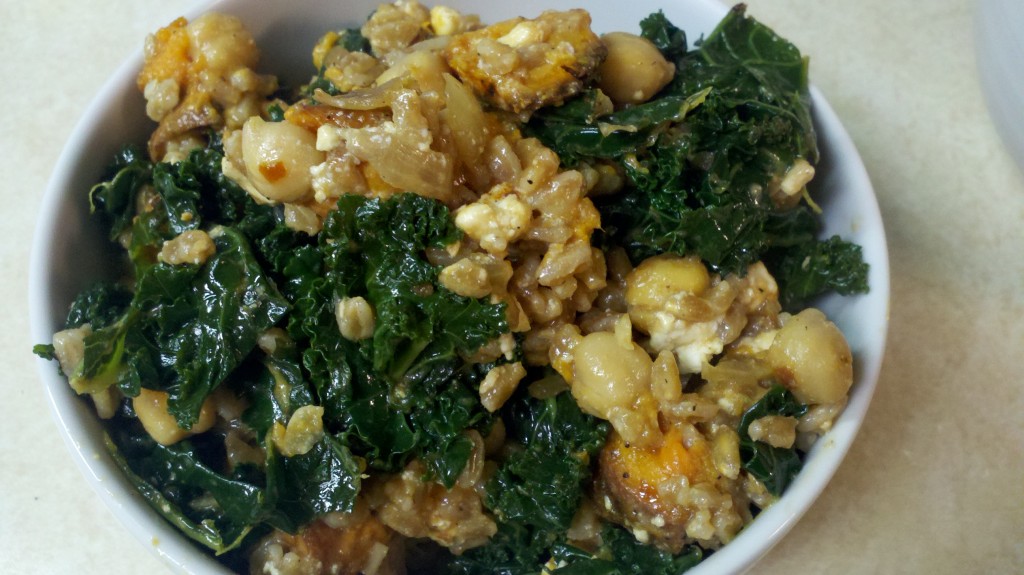Update: We have a new and improved version of this tutorial! Go here.
Happy Valentine’s Day! One year ago, Jessica sent Mary and I this blog post by I Am Baker for a photo shoot about hearts in weird places. This totally qualifies. We made it and photographed it, and now it is an annual event around Valentine’s Day each year. Thank you Jessica! Here is how you bake a heart into a cake.
This delightful cake actually requires 5 different cakes. A white cake with four layers, and a separate red velvet cake to make up the heart in the middle. Mary and I made our 5 cakes the night before the actual assembly of the heart inside a cake.
Red Velvet Cake
For the red velvet cake, I Am Baker messed around with a recipe from Magnolia Bakery, and then I messed around a bit more.
3 1/3 cups cake flour (not self-rising)
2 sticks unsalted butter, softened
2 1/4 cups sugar
2 eggs, at room temperature
2 egg yolks, at room temperature
6 tablespoons red food coloring (I literally just used a whole container for the super, super red color, but use liquid food coloring, trust me)
3 tablespoons unsweetened cocoa
1 1/2 teaspoons vanilla extract
1 1/2 teaspoons salt
1 1/2 cups buttermilk
1 1/2 teaspoons apple cider vinegar
1 1/2 teaspoons baking soda
Preheat your over to 350 degrees. Grease a 13×9 inch pan with butter and then line it with wax paper. This is important because otherwise the edges of the cake will be too brown.
Sift the flour. I HATE sifting. If you are like me, you just have to get over it and do it, it’s important to get out the clumps.
In a separate bowl, using a mixer, cream the butter and the sugar. Add the eggs one at a time and beat until combined.
In another bowl (this recipe requires a lot of bowls, sorry) mix together the cocoa powder, the vanilla, and the red food coloring. It will look weird and be a weird consistency, but you are just going to add it to the butter/sugar/egg mixture in a minute so don’t worry.
Add the cocoa mixture to the butter/sugar/egg mixture. Make sure you are satisfied with the color, otherwise you can add more food coloring now.
Mix together the buttermilk and the salt. Add this mixture to the butter/sugar/egg/red batter alternating with the flour and beat until combined.
In your final bowl, mix together apple cider vinegar and baking soda. It will fizz. Add this to the batter and mix one final time.
The recipe says to bake for 30 minutes, but it can take up to 45 minutes, at least in my oven. Let the cake cool in the pan, then on a rack.
Meanwhile, make the white cakes! I’m going to let you in on a secret. This recipe only makes enough for 2 cakes. I learned this after finishing making the cakes, pouring the batter into two 9 inch pans, and realizing I was short by two cakes. You have to double it, but I recommend doing it in two batches as there is a lot of beating involved and this recipe doubled can be difficult to handle with double the ingredients.
White Cake (yields two 9 inch cakes)
2 3/4 cups all-purpose flour
1 tsp baking powder
1 cup (2 sticks) unsalted butter, softened
2 cups sugar
4 large eggs, at room temperature
1 cup milk (I used buttermilk instead for a denser cake since you are going to be carving into it, and also, what else was I going to use that buttermilk for?)
1 teaspoon vanilla extract
Keep your oven preheated to 350 degrees. Grease and line your four 9 inch cake pans.
In bowl number one, mix together the flour and baking soda.
In bowl number two, cream the butter until it is smooth.
Add the sugar ½ cup at a time and beat until the mixture is light and fluffy. Add your eggs one at a time. Annoying I know, but again, important. Add the flour, alternating with milk and vanilla. Mix until just incorporated.
Pour your batter into your cake pans and bake for 20-30 minutes until a toothpick comes out clean.
THEN DO IT AGAIN! You have just made 5 cakes in one night. Go you!
The next day, Mary returned to my apartment, where we made our frosting and began the process of actually making a heart inside a cake.
Frosting – (from Magnolia Bakery, but adapted by me)
1 cup (2 sticks) unsalted butter, softened
6 to 8 cups confectioners’ sugar (basically a whole package, about 1lb)
1/2 cup milk
2 teaspoons vanilla extract
Start by creaming the butter. Add about half of the powdered sugar package, milk and vanilla and beat until smooth. Add the rest of the sugar one cup at a time to achieve the proper consistency. The icing should be thick and spreadable, but not drip off the beaters or spatula when you hold it up.
Assembling the Cake
Here is a step that Mary and I ignored the first time we made this cake, but it turned out to be SO important. Level your white cakes! It will look so much better when you are done if you do this simple step.
Stack your white cakes two and two together with frosting in between.
Stick the cakes in the freezer for about an hour. Meanwhile, break up your red velvet cake and pull out the best and most vibrantly red parts.
Cut a circle out of wax paper as a guide for the size of your heart in the middle of your cake.
Run a knife around the edges as a guide for the size of your heart. It is important that both cakes have the same size circle so the heart will match up.
In one cake, carve out a V with the point in the center of the cake. The edges should slope down to the V in order to form the bottom of the heart.
In your other stack of two cakes, carve out sloped edges, but leave a little pointed mound in the middle. This will be the top of the heart.
Fill your cakes with the mashed up red velvet cake. Mary and I mixed our red velvet cake with a small amount of frosting to keep it together, as last year it was rather crumbly.
Put the cakes in the freezer again to firm up. Don’t forget which one is the bottom and which one is the top. Once they have firmed up for about 30 minutes, stack the top cake on the bottom cake. Frost and decorate to your liking. Cut into your lovely cake, and voila! A heart has been baked into the center.
P.S. Any extra cake and frosting can be used for cake balls!

